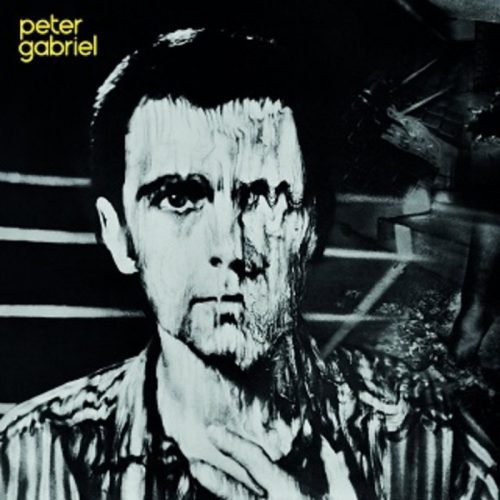Released in 1980, Peter Gabriel’s third solo album, commonly known as “Melt” due to its striking cover art, stands as a significant milestone in his artistic journey post-Genesis. Coming after his departure from the band that brought him international fame, “Melt” is both a continuation and a reinvention, setting the stage for Gabriel’s evolution as a pioneering solo artist. This album diverges markedly from the progressive rock aesthetics of Genesis, embracing instead a darker, more experimental sound characterized by its innovative use of the drum machine and synthesizers.
Artistic Intentions
At this juncture in his career, Gabriel was keen to explore themes more personal and politically charged than those typically found in his earlier work. The album’s artistic vision was heavily influenced by his growing interest in world music rhythms and the modern recording technology of the time, which he harnessed to produce sounds that were groundbreaking. Gabriel’s use of the gated drum sound, developed in collaboration with producer Hugh Padgham, notably on the track “Intruder,” was revolutionary and would go on to influence the sound of the 1980s.
From the outset, Gabriel aimed to craft an album that would not only challenge the norms of music production but also address complex themes such as psychological turmoil, anti-war sentiments, and humanitarian issues. These themes were not just passing muses but were deeply integrated into the fabric of Gabriel’s songwriting, as evidenced by tracks like “Biko,” a haunting tribute to the slain anti-apartheid activist Steve Biko.
Sonic Exploration

The production quality of “Melt” is a high point in Peter Gabriel’s discography, showcasing a pioneering spirit in both technology and sound design. The album is noted for its crisp, precise production—a deliberate choice that enhances the intense, sometimes unsettling lyrical themes.
The introduction of the gated reverb on the drums, which delivers a tight, compressed echo, created a sonic space that was distinctly innovative for its time. This technique not only enhanced the rhythmic impact of tracks like “Intruder” but also added a palpable tension that aligned perfectly with the album’s darker, introspective themes. The clarity and sharpness of the production serve to foreground Gabriel’s voice and the diverse instrumentation, ensuring that each element is distinctly audible yet cohesively blended.
Musical Arrangements
The musical arrangements on “Melt” are a testament to Gabriel’s foresight and artistic daring. The album veers away from traditional rock setups, incorporating a rich tapestry of sounds that include synthesizers, a cello, and the Surdo drum, which lends a menacing depth to the opening track. Gabriel’s decision to forego cymbals entirely shifts the percussive balance dramatically, allowing for a more atmospheric and dense sonic texture that reflects the album’s thematic gravitas.
Vocally, Gabriel experiments with various modulations and overlays, which add to the eerie and haunting mood, particularly evident in “No Self Control” where his voice cascades over a panicked rhythm, simulating a psychological spiral. The use of backing vocals, often layered and looped, contributes to a feeling of chorus and community, particularly powerful in “Biko” where the collective voices rise in a mournful yet defiant tribute.
Genre Elements
“Melt” defies simple genre categorization, threading elements of art rock, world music, and post-punk through its compositions. This blending is innovative, as Gabriel incorporates the pulsating rhythms of world music with the synthesizer-driven soundscapes of new wave, creating a style that is uniquely his own. The album does not simply use these genres; it bends them to serve its narrative and atmospheric needs. For instance, the use of a world music-inspired beat in “Games Without Frontiers” underscores its theme of global strife masked by childish games, while the stark, minimalist approach of “Family Snapshot” enhances its narrative intensity, drawing from cinematic influences to tell a gripping story.
Lyrical Analysis

Peter Gabriel’s “Melt” is rich with lyrical content that probes deep into the psyche of human behavior, social injustices, and personal turmoil. The album frequently explores themes of isolation, fear, and the impact of technology on human interaction. One of the central motifs is intrusion—both in a physical and psychological sense—as best illustrated in the track “Intruder,” where Gabriel adopts the unnerving perspective of a burglar breaking into a home. This motif of unwanted entry parallels the broader themes of vulnerability and exposure that permeate the album.
Another recurring theme is the critique of political systems and their dehumanizing effects, a poignant narrative thread that reaches its apex in “Biko.” This closing track is a powerful lament for the murdered anti-apartheid activist Steve Biko, turning personal grief into a universal call for human rights and dignity. Through these stories, Gabriel employs his lyrics to spotlight systemic violence and personal pain, weaving a tight narrative fabric that challenges listeners to confront uncomfortable truths.
Lyrical Depth
Gabriel’s lyrics on “Melt” are marked by their poetic complexity and layered meanings. The songs are crafted with a keen attention to wordplay and imagery, often leaving space for interpretation. In “Family Snapshot,” for instance, Gabriel tells a story from the perspective of an assassin, using a narrative that is both straightforward and deeply symbolic, reflecting on themes of neglect, revenge, and longing for connection. The lyrics are not just heard; they are felt, requiring the listener to engage actively with the narrative layers and emotional currents.
The abstract lyrical style in “Games Without Frontiers,” which juxtaposes childish game imagery with serious political commentary, exemplifies Gabriel’s skill in blending the direct with the symbolic. This approach allows listeners to interpret the song in multiple ways, enhancing its depth and the intellectual engagement it demands.
Emotional Impact
The emotional resonance of “Melt” is profound, with lyrics that stir empathy, sorrow, contemplation, and sometimes discomfort. Gabriel’s use of personal and political narratives invites listeners to experience the songs not just as music, but as emotional journeys. The stark realism of “Biko,” combined with the haunting refrain, evokes a deep sense of loss and injustice, leaving a lasting emotional impact that transcends the confines of the album.
In tracks like “I Don’t Remember” and “Lead a Normal Life,” the emotional texture is one of confusion and a yearning for normalcy amidst chaos, reflecting the inner turmoil and dissociation faced by individuals under distress. The album, through its lyrical prowess, not only narrates tales but also colors them with profound emotional layers, making the listening experience both intellectually and emotionally engaging.
Cohesion and Flow

The sequencing of tracks on Peter Gabriel’s “Melt” demonstrates a deliberate architectural design, ensuring that each song not only stands on its own but also contributes to a larger, cohesive narrative. The album opens with “Intruder,” setting an immediate tone of psychological and physical intrusion that reverberates throughout the subsequent tracks. This opening lays a foundation of unsettling themes which are explored further as the album progresses.
The flow from the dark, menacing tones of the early tracks into the more introspective and politically charged later songs is seamless, maintaining a narrative coherence that is both compelling and thoughtful. For instance, the transition from “No Self Control,” which deals with personal turmoil and obsession, into “I Don’t Remember,” offers a natural progression in the exploration of identity and memory loss, deepening the emotional and thematic layers of the album.
The album’s conclusion with “Biko” serves as a powerful climax, encapsulating the overarching themes of political injustice and human rights. This track not only ends the album on a note of somber reflection but also retrospectively casts the preceding songs in a more poignant light, reinforcing the album’s message and emotional impact.
Thematic Consistency
“Melt” maintains a high level of thematic consistency, with Gabriel expertly weaving a tapestry of sound and meaning that holds tightly together from start to finish. The themes of intrusion, alienation, and the quest for dignity in a cold, technological era are revisited in various forms across different tracks, each adding depth and context to the overarching narrative.
Musically, the album stays true to its unique blend of experimental rock and world music influences, with each track contributing to a consistent sonic palette. This unity is achieved through the recurring use of pioneering production techniques and a distinctive array of percussion and synthesizer sounds that have become signatures of the album.
Despite its diverse thematic explorations and complex emotional undertones, “Melt” avoids jarring shifts. Instead, it achieves a balance between variety and unity, ensuring that each track feels like an integral part of the whole. Even as Gabriel ventures into different musical and lyrical territories, the album retains a sense of wholeness, marked by a meticulous attention to the flow and transitions between tracks.
Standout Tracks and Moments
Key Tracks
Within the rich tapestry of “Melt,” several tracks distinguish themselves not only for their artistic innovation but also for their profound emotional resonance and lyrical depth.
“Biko” undoubtedly stands as the album’s emotional and thematic climax. This tribute to the fallen anti-apartheid activist Stephen Biko transcends mere song, serving as a poignant call to awareness and action against human rights abuses. Its blend of sorrowful lyrics, a mournful yet powerful chorus, and the integration of African musical elements not only highlights Gabriel’s commitment to global issues but also showcases his ability to fuse diverse musical influences into a compelling narrative piece.
“Intruder” is another standout, memorable for its introduction of the gated drum sound that would come to influence much of 1980s pop music. The track’s creeping, unsettling rhythm and first-person narrative exploring themes of privacy and violation make it a powerful opener that sets the tone for the album’s exploration of darker, psychological themes.
“No Self Control” is notable for its depiction of mental anguish and obsession, paired with a frantic musical pace that captures the inner turmoil of the protagonist. The track’s intense, almost chaotic arrangement mirrors the psychological distress described in the lyrics, making it a striking example of how music and narrative can intertwine to enhance emotional expression.
Memorable Moments
One of the most memorable moments in “Melt” occurs in “Family Snapshot,” which delves into the mind of an assassin. The line “I don’t really hate you – I don’t care what you do” delivered in a calm, almost detached manner, chillingly contrasts with the violent act being narrated, highlighting Gabriel’s skill in conveying complex emotional states through his lyrics and vocal delivery.
The instrumental break in “Games Without Frontiers” is another significant moment, where the whimsical, almost childlike melody contrasts sharply with the song’s serious commentary on nationalism and war. This juxtaposition serves as a powerful commentary on the innocence lost in global conflicts, encapsulated within a catchy, seemingly benign chorus.
Finally, the use of silence in “Lead a Normal Life” is effectively poignant. The sparse arrangement and long pauses between sections create a sense of isolation and emptiness, reflecting the mental state of the song’s subject. This use of silence as an instrument in its own right showcases Gabriel’s innovative approach to songwriting and production, where even the absence of sound is laden with meaning.
Each of these tracks and moments not only defines “Melt” but also underscores Peter Gabriel’s mastery as a musician capable of weaving intricate stories through complex emotional landscapes, making the album a landmark in his career and in the broader landscape of music.
Artistic Contribution and Innovation

Peter Gabriel’s “Melt” is often celebrated not just as a pivotal album in his own discography but also as a transformative work within the broader music industry. It stands as a testament to the potential of music to cross cultural and sonic boundaries, pushing the envelope both in terms of production techniques and thematic exploration. In an era dominated by the nascent sounds of synth-pop and new wave, “Melt” carved out a unique niche by integrating world music influences and experimental soundscapes that challenged the status quo of popular music.
This album’s refusal to adhere to the norms of rock or pop, instead presenting a complex blend of genres, helped redefine what could be commercially and artistically viable in the mainstream music industry. It contributed significantly to the art rock genre, infusing it with a new political consciousness and sonic experimentation that many artists would attempt to emulate in the years that followed.
Innovation
One of the most innovative aspects of “Melt” is undoubtedly its pioneering use of the gated reverb drum sound, particularly on the track “Intruder.” This production technique not only transformed the sound of drums in popular music—making them crisper and more resonant—but also influenced countless records throughout the 1980s and beyond. The impact of this innovation can be heard across various genres, from pop and rock to hip hop and dance music, showcasing Gabriel’s far-reaching influence on music production.
Additionally, Gabriel’s approach to blending different musical styles was particularly fresh and innovative. By incorporating elements of world music—particularly African rhythms and instruments—into his compositions, Gabriel not only broadened the sonic palette of Western pop music but also raised awareness of global musical traditions, which were often underrepresented in mainstream music at the time.
Thematically, “Melt” tackled complex and often taboo subjects such as political oppression, psychological disturbances, and human rights, setting a new standard for how deeply personal and globally conscious themes could be integrated into popular music. Songs like “Biko” not only served as tributes but also as catalysts for political and social discourse, highlighting the power of music as a tool for change.
Closing Thoughts

Peter Gabriel’s “Melt” is an album that resonates with a profound sense of artistic integrity and innovation. It encapsulates a pivotal moment in Gabriel’s career, marking his transition from a progressive rock frontrunner with Genesis to a solo artist unafraid to explore and push the boundaries of music.
Strengths and Weaknesses
The album’s strengths are manifold, beginning with its groundbreaking production techniques, especially the iconic use of gated reverb that would go on to define a generation of music. Its bold thematic content, which tackles issues from personal mental anguish to global political injustices, gives it a depth and relevance that few albums of its time achieved. Musically, Gabriel’s fusion of disparate genres—from rock to world music—creates a rich, eclectic sound that never feels disjointed, illustrating his mastery of musical synthesis.
If there are weaknesses, they might only be perceived in terms of the dense and sometimes challenging nature of its themes and sounds, which may not cater to all tastes. However, even this aspect can be viewed as a strength in the context of an artist striving for genuine expression and profound communication through his art.
Final Thoughts and Rating
“Melt” is more than just an album; it’s a profound artistic statement. With its innovative sound and socially conscious lyrics, the album not only defined a new path for Peter Gabriel’s solo career but also left an indelible mark on the music industry. It challenges listeners to not only enjoy music as an art form but also to engage with it as a medium for understanding and change.
Given the album’s significant impact on music production, its pioneering blend of genres, and its courageous engagement with complex themes, it is fitting to award “Melt” a perfect score of 10 out of 10. This rating reflects its status as a masterpiece of its era, a work that not only stands the test of time but also continues to influence artists and music aficionados alike.
